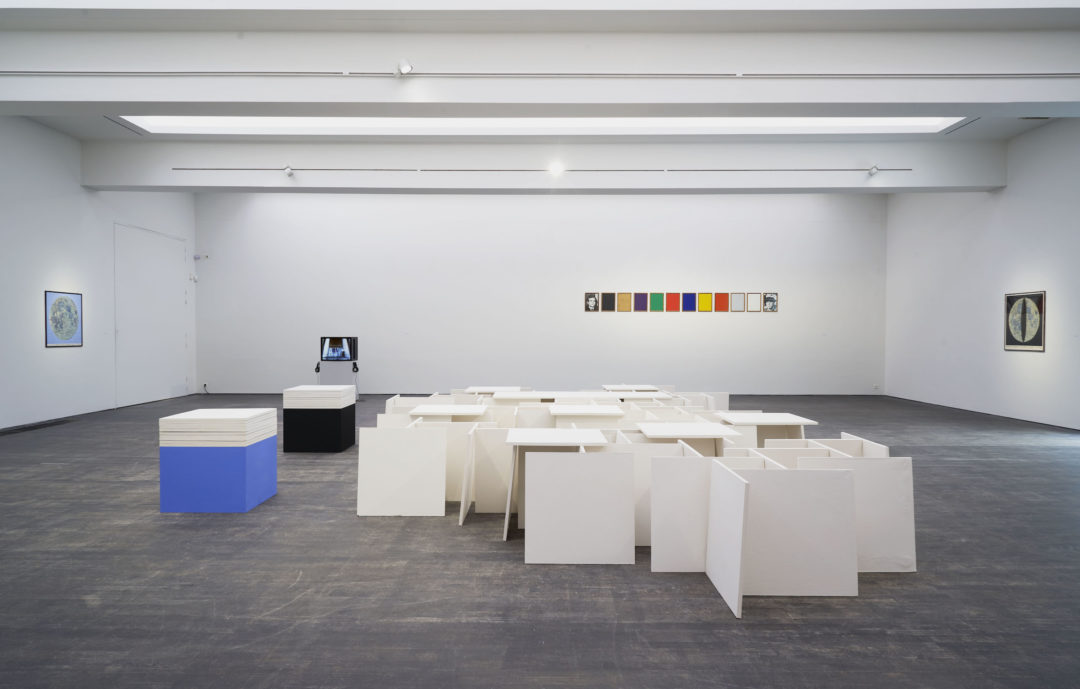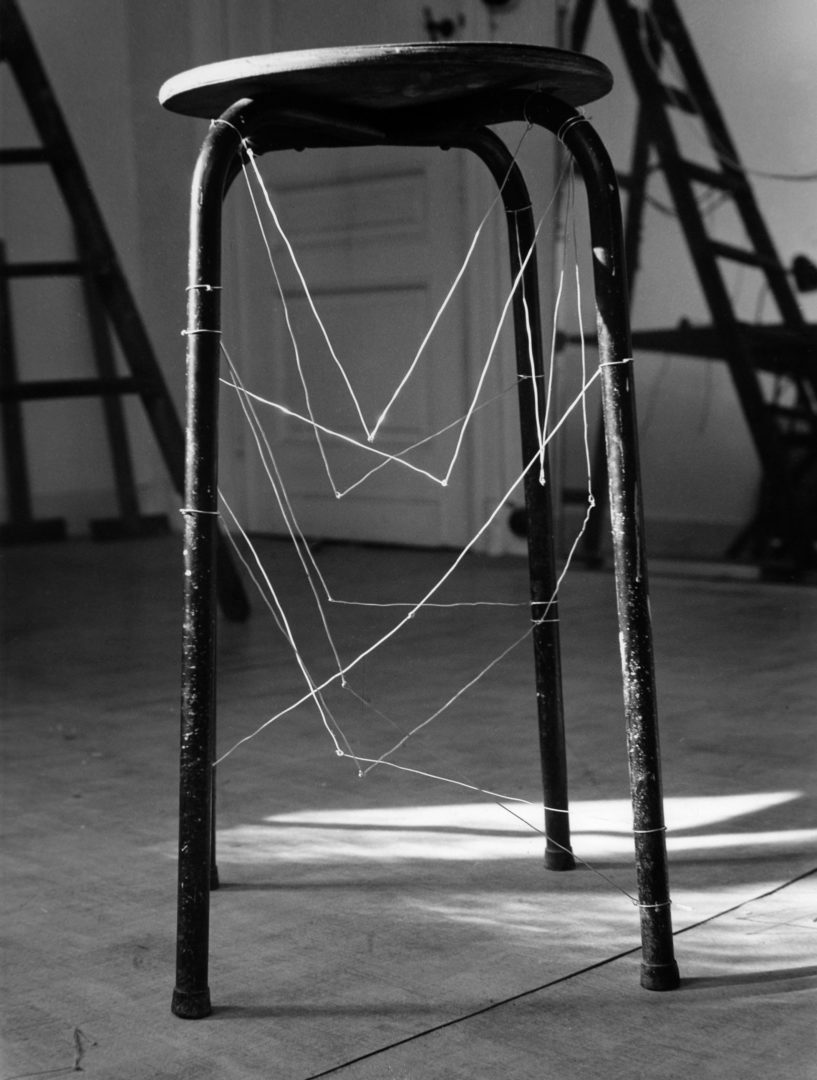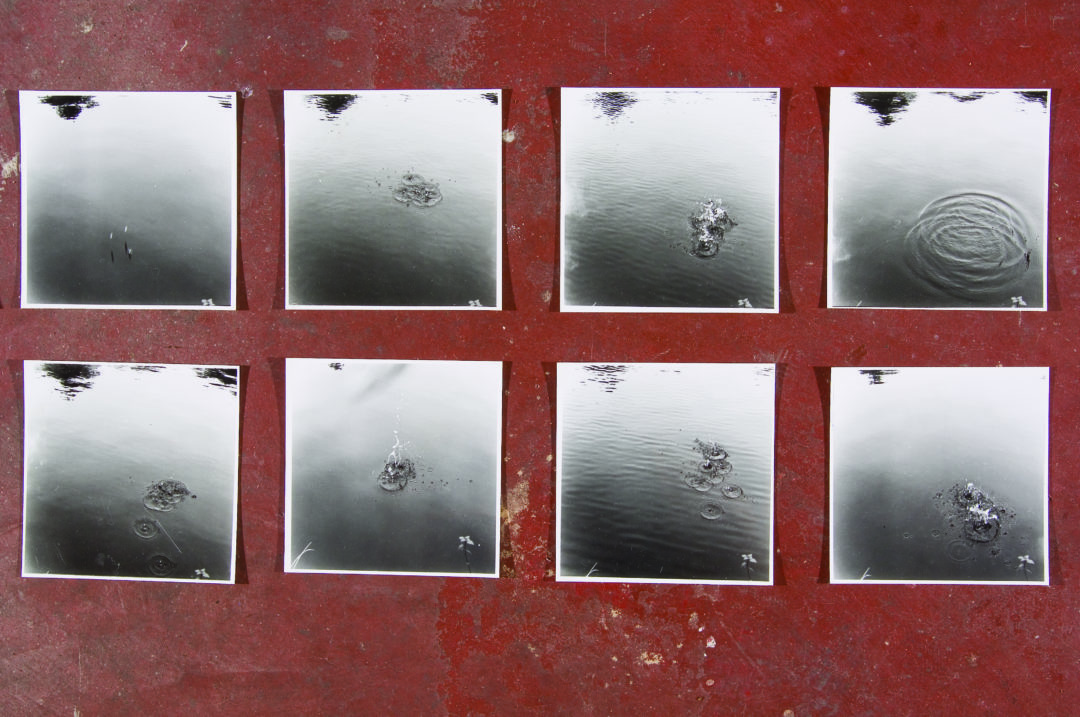Philippe Van Snick

dynamic project (S.M.A.K., October 2022-3 March, 2023), is Belgian artist Philippe Van Snick’s first major retrospective. The artist’s consequential and varied oeuvre has remained largely under-the-radar outside of Belgium, as well as in France, despite having been present in avant-garde movements in the 1970s. The artist made notable contributions to a burgeoning conceptual art scene and inherited much from modern abstraction, concrete art and Duchamp. The exhibition—which takes the form of a “retrospective”, according to the two curators, Marta Mestre and Luk Lambrecht—gathers major works, while also revealing lesser-known aspects of this artist who saw himself primarily as a researcher.
“My first meeting with Philippe Van Snick was decisive. He completely changed the way I saw things, I had this modernist, strict, formalist vision of art; I was really young at the time. He showed me that abstract art could include everyday life, chance,” recalled Luk Lambrecht, who would go on to have a lengthy friendship with the artist, as well as several collaborations, lasting until the former’s death. This statement can be applied to the visitor of this exhibition’s experience as well as to mine— Philippe Van Snick brings new life to our vision of modern abstraction, in large part due to the decimal system he adopted as a working method. This method, which he developed through his conceptual practice, was influenced by concrete art and the “imaginative” modernism of Georges Vantongerloo. His system would prove to be extremely fertile, contributing to the originality of a prospective art, in perpetual movement.
When asked about Van Snick’s art, Marta Mestre highlighted two important aspects: experimentation and play. Indeed, playfulness occupies an important role, in various ways, in this art which operates according to specific rules. There is an interplay between the forms and the colours, between the formal language and reality, between the components of the paintings, between the works and the viewer.

Elliptical Energy
The dynamic project exhibition encompasses fifty years of work, and sidesteps the idea of a rigid narration through a thematic organisation that is nonetheless chronological: Ellipsis, Infinite World, Directions, Fundamentals of Nature, Colour, Diaphragm, etc. The exhibition reveals both the main currents of a long term research project, as well as the side trips—recurrences, detours and incertitude included. This approach lets us follow a fluid thought process, which seeks to define itself as it searches, moving from one experiment to the next, through a dialogue with all of the foremost avant-garde currents which the artist participated in at the end of the 1960s.
Indeed, Van Snick went on to show his work at the Wide White Space gallery (1966-1976) in 1972. The gallery was founded by Anny de Decker and German artist Bernd Lohaus and quickly established itself as an experimental space among international avant-garde circles in Europe. “We were attracted first and foremost by what was extreme; willing to take things as far as possible in all of the different movements or currents.” The gallery collaborated with many avant-garde elites: Broodthaers, Beuys, Carl André, Buren, Lawrence Weiner, Robert Filliou, Edward Kienholz, David Lamelas, Panaramemko, Piero Gilardi, Gerhard Richter, along with others. There was a “community of interests” which united these artists and their gallerists, who took their cues from the inventions of their predecessors.
The title, dynamic project refers to the internal dynamic of a practice which was consistently guided by experimentation. The curators chose to reprise the title of the last publication produced by the artist and which was published posthumously. Dynamic is in fact a word Van Snick included as one of the keywords in a vocabulary which was used for the works themselves as well as for exhibitions (there was a Dynamic Project exhibition in 2010). The ellipses drawings (Dynamic / Mind / Drawings, Ellips – Ellipsoïde, 1970), which feature at the beginning of the exhibition are therefore a neat summary of the artist’s overall project, “The ellipses drawings were made with the intention of recording the development of an object from zero, in the form of a series of drawings. The best way to record was to use mathematical language.” Aerial and phantom-like, these large acrylic and graphite sketches on graph paper bring to mind Duchamp’s Large Glass, with its projected silhouettes and shadows. The ellipses project us into a 4th dimension: that of an art which is speculative and physical at the same time, an object which is a product of its own system.
These arcs of ellipses or eclipses are also present in the form of orange banners, suspended magnificently in the central hall of S.M.A.K. They were inspired by an “orange experiment”, as the artist referred to it, the simple ordinary perception of a diffused light under an orange parasol in the sunlight. Speculative and physical, abstract and concrete, Van Snick’s art developed in terms of a fluid dialectic which circulates between art and reality, nature, the everyday, space and the now. As the exhibition makes clear, the artist worked on a human scale: Territorium, a vertical wood tripod measuring 1,83 metres, was inspired by the Modulor concept developed by Le Corbusier, who determined that the ideal height was 1,83 metres—incidentally the artist’s height as well—reminding us that the measure of art, or its starting point, as well as its horizon, are human beings.

Ping-Pong party
Over the course of the exhibition at S.M.A.K., while taking in the works which date from the 1960s, 70s and 80s, there is a feeling of witnessing a methodical overview of an entire history of contemporary art: from conceptual photography to the exploration of the everyday and of notions of time and space, through film or photography, minimal sculpture, the deconstruction of painting as pictorial space, as Supports-Surfaces did as well, other experimental approaches. Van Snick was a product of his times, in which he ceaselessly carried on a game of ping-pong. Ping-Pong—also a term which refers to a type of diplomacy which existed between the United States and China during the Cold War—is a joyful project. Created in 1972 and revisited in 2017, this project (the only participatory one) includes a ping-pong table, the video recording of a game, a series of 11 photographs and the drawings of a scored game, undoing and short-circuiting the chronology of a game and of the principal of winners and losers. It sets up a situation which is purely one of entertainment, opening it to spectators by inviting them to take up a racket.
During the 1970s, the artist remained in sync with other avant-gardes, while also including an original twist in his conceptual practice through the adoption of a mathematical system as operational method in 1970. “The idea is to apprehend the world through a system which is extremely variable and open, and yet is nonetheless universally adoptable through the use of numbers.” This decimal system (from 0 to 9), is therefore elementary, and used to draw a concrete cosmogony which makes the everyday its experimental terrain. Open to chance, the system generates infinite possibilities, applied to different materials such as wire, photography, paper, objects, situations. Épingles de signalisation (1974) (Roadsign Pins) is made up of 10 constellations of 10 pins each, the composition of which is left up to the installers of the work. Using wire, he produced spirals using 10 segments of the wire or haphazard sculptures out of 10 segments and 10 knots. Stoel (Chair, 1975), which has a Duchampian feel, is a supplemented readymade, augmented by a spider-like constellation made of 10 wire segments which have been added between the legs of a chair. This conceptual period is very prolific. In the video Druppels en koffie (Drops of Coffee, 1975) papers move around, like tectonic plates, beneath a spilled cup of coffee—occult forces of reality which the artist reveals. The works distil a discreet sense of humour which does not contradict the precision of the overall project, on the contrary, it is rooted there, like a secondary effect of a treatment which has been given to reality.
Beginning in the 1980s, when art began to be favoured by the art market and by speculation, the artist chose to distance himself. “Personality played a big role in this decision; I didn’t want to expose myself too much. I wanted to be more of a researcher than an exhibitionist.”

Eloquent Painting
1979 marked a turning point. The artist turned once again to painting, introducing colour to his system while restricting it to a palette of ten nuances. “A colour has been attributed to each number: zero: red, one: yellow, two: blue, three: orange, four: green, five: purple, six: black, seven: white, eight: gold, nine: silver.” Van Snick continued dialoguing with his era, which was experiencing a resurgence of expressive and figurative painting, which had previously been relegated to the past. “It was the end of the 1970s. At that time, the art world was discovering a new dynamic: Italian trans-avant-garde, the Neuer Wilden in Germany, the punk movement, New Wave…And I was thinking, ‘I want to work with colour.’” Following this, a practice developed which was centred around colour. The geometry loosened up. The forms became organic. The artist produced a collection of remarkable works. The highly original Kleurmachine (Colour Machine, 1979) appears to be a programmatic work, like a sign for a colour shop. At the centre of an orange banner, a colour chart with ten colours has been sewn with wires and pins, drawing attention to its handmade objecthood; this Machine recalls Duchamp’s painting Tu m’ (1918), possibly citing its colour samples in perspective. This painting was the French artist’s goodbye to painting, and is indeed one of the Belgian artist’s main references.
In 1984, the artist added light blue to his palette, which appears together with black, as a reference to the two poles or to the “day/night” cycle. The system became more complex, integrating art into the cycle of life and of nature, accentuating the cosmogony dimension, which was already clearly stated through the presence of nature and the garden as source of inspiration.
The exhibition clearly shows a surprising aspect of Van Snick’s work: how a trajectory which is punctuated by bifurcations which coincide with surprising applications of the artist’s system, can result in works which are so singular and remarkable. His art becomes like a colour machine, transforming a formal language into a painting which is not only conceptual but also contextual; sensitive to the goings-on around it. Snickian abstraction includes, in my view, a human, perhaps even personal dimension. In the diptych La Promenade, the drawing fuses together the road, the duck and the body. The enlarged painting Eilanden (Island, 2016) is a key work. The composition of scattered, coloured figures which are standing on the ground are an echo of the dramatic situation of the refugees on Lesbos.
J.Beuys & M. Broodthaers (1986) is a uniquely surprising witz, or joke, which recalls the polemic between Broodthaers and Beuys and comes to an ironic conclusion about the art world, avid for giants to topple as well as symbols. A line of twelve paintings, 10 of which are painted with Snickian colours harbours at the extreme left and instead of a light blue colour, a photograph of Marcel Broodthaers, symbolising Day, and at right a photograph of Josephy Beuys, who is Night.
Two series form a kind of parenthesis in the artist’s trajectory, where they give rise to existential contemplation. The earthy, greenish tones of the group of “Mélanges particuliers” (1995) (“Odd Mixtures”) contrast with the habitually bright palette. These vaguely melancholic paintings provide a sharp critique of painting: the signature and the date which are painted on the middle of the canvas take on an aspect of institutional critique, in a provocatively humoristic way, which also is a sign of bad humour—the works were not well received. The result of a successive layering of opposing colours, these Odd Mixtures seem to suggest the sounding of a death knell in spite of its congruency with the method. Equally unexpected, the series “Visages-paysages” (1997) (“Faces-Landscapes”) are burlesque-seeming: their backdrops are covered in a thick impasto, sometimes punctured through the middle and hung askew. These intense pictorial experiences were short-lived: they led to an impasse in that this type of painting ran the risk of collapsing in on itself.

Eloquent Colour
For Van Snick, painting was a high-stakes game. Influenced by concrete art, he painted as if building with a set of construction blocks, then deconstructing; using a system which authorised all sorts of metamorphoses. Paintings could be broken up into ten different pieces, smashed up against the wall (Polychromes éclatés) (Smashed Polychromes), and then (mentally) put back together again, like the colouring book drawings where the assembled shapes are in fact backward. Paintings could become sculpture in the form of long sticks (10 colours, as always) draped in painted canvases and lined up against the wall to make up a rectangular bas-relief (Vertikaal, 1993); a smaller version could become Lingots, spread out, like a Mikado game. (0-9) Lady Comfort (1983) is a major work. Assembled in a circular form, ordinary brown boxes bearing the Lady Comfort logo compose an assemblage of anthropomorphic figures. Each box features a geometric polychromatic painting. A strange encounter! Formal and incongruous, Lady Comfort plays references of domesticity against geometric painting, the readymade and the humble minimalism of the box. Painting is like a game which is played with reality and can be made to adapt to all sorts of situations.
A discreet humour which is almost incidental, drives Van Snick’s work. There is an effort to be a part of things, while keeping at a distance. This was the result of the artist’s system which produced non-systematic effects which were surprising and unexpected. His decimal system, an elementary one, allowed him to play and to remain perpetually in motion—between formalism and life, between the precious and the ordinary, the rule and chance, the known and the unknown. As his research progressed, colour was gradually liberated, allowed to express itself in a direct way as Matisse explained, “By allowing colour to touch us and reach directly into our souls, it stirs us, it gets us moving, it allows convene with the most pure form of joy.” His last polychromatic paintings where figures float in space affirm in a straightforward way the emotional impact and dynamic of colour.
______________________________________________________________________________
Head image : Philippe Van Snick, dynamic project, S.M.A.K. 2022. Photo : Dirk Pauwels
Related articles
Streaming from our eyes
by Gabriela Anco
Iván Argote
by Patrice Joly
Don’t Take It Too Seriously
by Patrice Joly

